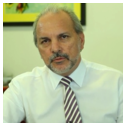 Where was the QANTAS Board Risk & Audit Committee during the past 6 years of Alan Joyce’s systematic destruction of, at one-time, one of the world’s leading airlines?
Where was the QANTAS Board Risk & Audit Committee during the past 6 years of Alan Joyce’s systematic destruction of, at one-time, one of the world’s leading airlines?
Although there are growing calls for the sacking of Alan Joyce as CEO of QANTAS following the announcement this week of a $3b loss, there is a still a strong chorus of supporters saying the result is just a myriad of complex problems i.e. a death by 1000 cuts. To the outside world it looks more like Monty Python’s mutilated Black Knight maintaining “Tis but a scratch”. (https://www.youtube.com/watch?v=zKhEw7nD9C4)
In a series of focus groups conducted in February in Sydney’s central business district, one of the participants said each of the eight people in his group agreed “Joyce and his team have ruined Qantas for their own ends” and “Qantas needs to heal the rift between its staff and management to gain more confidence and thus more patronage from the public”. (Read more: http://www.smh.com.au/business/aviation/can-qantas-airways-boss-alan-joyce-keep-his-head-20140828-109p1y.html#ixzz3BoGkh2Lj )
But is Alan Joyce the root cause? Who appointed a person with a track record of Ansett (collapsed) and Jetstar (low budget) regional airlines to what was a premium end global company? Could lack of understanding of the industry be an issue? Of the QANTAS board members (excluding Joyce) only 3 have direct previous airline experience while 9 of the 14 BHP board members have mining/energy experience. According to the QANTAS Governance Statement “Material risks and Management’s responses to managing these risks are escalated to Executive Management, Board Committees and the Board”.
A $3 billion loss! If indeed escalation of risk does occur to Risk & Audit Committee and then to Board level, how was it not mitigated? Without being present at QANTAS board meetings, no one knows if it was the result was a lack of understanding or capability, but one thing is for certain, it was a failure of QANTAS’ risk management framework.
Unfortunately there is a wide-spread attitude in boardrooms generally, that Risk Management is a regulatory compliance issue and the purpose of the Risk & Audit board committee is to publish the annual compliance statement. Although legislated, the real purpose Risk & Audit is to inject breadth and longevity to board deliberations. Over focusing on specific issues such as ownership and cost-cutting invariably results in destruction of shareholder value. As I covered in my last article on Strategic Imperatives (http://www.fasttrack365.com/blog/bid/393605/How-to-use-Strategic-Imperatives-to-focus-Corporate-Risk-Management), the balance of competing objectives is what develops the overall health of a business which drives growth.
Reputational Risk, which QANTAS still does not appear to be aware, is a company’s greatest risk and I believe is the primary cause of QANTAS’ predicament. Joyce’s war on its workforce and his obsession with ownership, (which is the reason for the focus group’s comment that they have “ruined Qantas for their own ends”) has been instrumental in the destruction of the brand and company image. QANTAS’ image as the only airline never to have crashed, a la Rain Man, was gutted with his public brawl with aircraft maintenance engineers and his comments on the need to change ownership to update their “ageing fleet”.
QANTAS second main attraction was the friendly and personal nature of its service staff. It is hard to believe now that, at one time, the welcoming smile at check-in and the genuine personal interest of cabin staff in-flight, was the trademark of QANTAS which made them the envy of the airline industry. Recently at the Melbourne Comedy Festival 3 separate comedians did skits on the poor customer service levels now at QANTAS. This derision was once reserved for communist airlines and Air France. QANTAS’ one time leading mantle has now been taken by the likes of Emirates and Etihad. And Mr Joyce, it has nothing to do with price but rather staff attitude and commitment which comes from the top and long lost at QANTAS.
Message to QANTAS Board: Apple was never the cheapest PC or phone. Consumers bought product based on an image, vision and great service.
So what does all this have to do with risk management? If QANTAS truly had an effective risk management system and a functioning Risk & Audit committee, they could not have continued to ignore the deterioration in the reputational, sustainability and shareholder value risk profiles. A proper profile has mitigation strategies and key risk indicators that would have gone red long before hitting $1 billon let alone $3 billon. Several years ago I asked whether Ford Australia’s management were asleep at the wheel. One must now wonder when those at the controls of QANTAS will wake up.
Bio:
Greg Carroll - Founder & Technical Director, Fast Track Australia Pty Ltd.
Greg Carroll has 30 years’ experience addressing risk management systems in life-and-death environments like the Australian Department of Defence and the Victorian Infectious Diseases Laboratories among others. He has also worked for decades with top tier multinationals like Motorola, Fosters and Serco.
In 1981 he founded Fast Track (www.fasttrack365.com) which specialises in regulatory compliance and enterprise risk management for medium and large organisations. The company deploys enterprise-wide solutions for Quality, Risk, Environmental, OHS, Supplier, and Innovation Management.
Mastering 21st Century Risk Management” which will be available from the www.fasttrack365.com website in a couple of weeks. Meanwhile a recent Webinar on the topic can be seen at http://www.youtube.com/watch?v=nQoJj6FBxrY&feature=youtu.be in which we show how emerging best practices provide a good picture for how enterprise risk management should look in the 21st century.